Newcastle and Liverpool faced off last Monday in Matchday Two of the Premier League. The match had it all: five goals, a sending-off before half-time, a local comeback… and a last-minute winner. However, what stood out the most was how Eddie Howe’s side managed to turn a 0–2 deficit with a man down into 2–2, holding out until stoppage time. Let’s break down how the game unfolded and why this was the most remarkable aspect of the match.
Two Different Ways of Building From the Back
When Newcastle chose to build from the back, they structured themselves with a line of two wide center-backs, supported by three midfielders further ahead, and an additional link player to connect with the forwards.
Eddie Howe’s idea was to create width, allowing his players to receive the ball with more space against Liverpool’s pressing. They often progressed down the wings with quick touches and vertical passes toward Elanga or Barnes, exploiting depth and reaching the opposition box quickly.
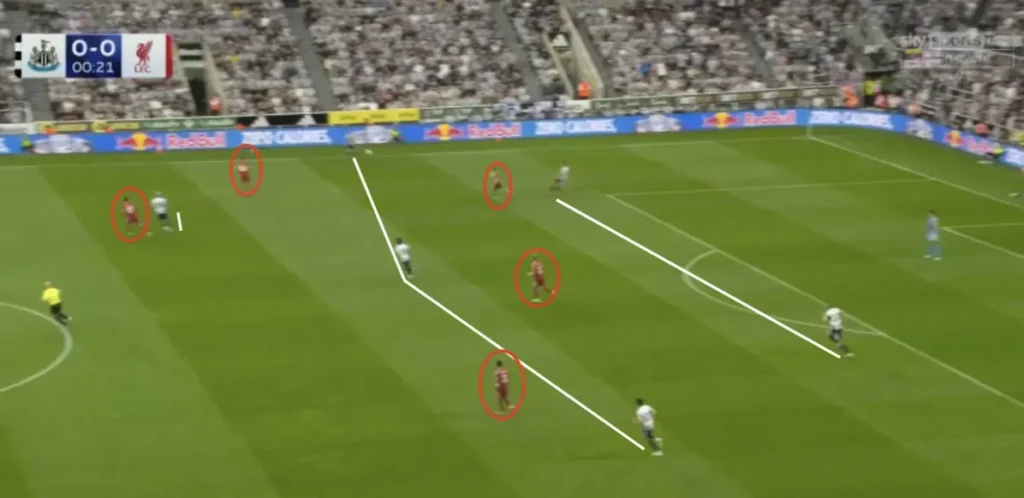
Liverpool, meanwhile, formed a back line of three in front of the goalkeeper, composed of the two center-backs plus right-back Szoboszlai, who circulated the ball with greater quality and precision. Ahead of them sat two midfielders.
At times, Wirtz also dropped deeper to collect possession and support the build-up against Newcastle’s aggressive press. Despite being set up to play out, Liverpool’s real plan was to launch long balls (usually toward the left side) for Ekitiké and Gakpo to contest aerial duels, advancing up the pitch directly.
The absence of a playmaker like Mac Allister—out for paternity leave—hurt Liverpool significantly, as there was no true replacement. That’s why Slot’s side often avoided risky build-up, preferring long balls and aerial duels away from their box.
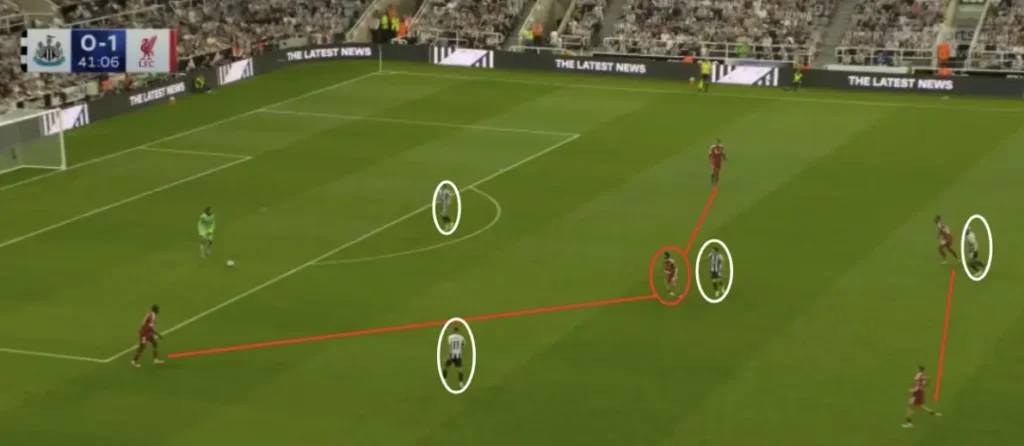
Containment in Both Halves
Before Anthony Gordon’s red card just before the break, Newcastle defended deep in a 4-5-1, aiming to deny Liverpool access to the interior channels.
After the sending-off, Howe had to reorganize into a 4-3-2, shifting as a compact block and forcing Liverpool to circulate the ball side-to-side without penetration.
Despite holding around 70% possession in the second half, Liverpool’s passing was passive once ahead, inviting Newcastle to step up. Howe’s men, however, showed great defensive solidarity with constant covering runs to prevent Liverpool from extending their lead, before finding an attacking spark after Bruno Guimarães’ goal.
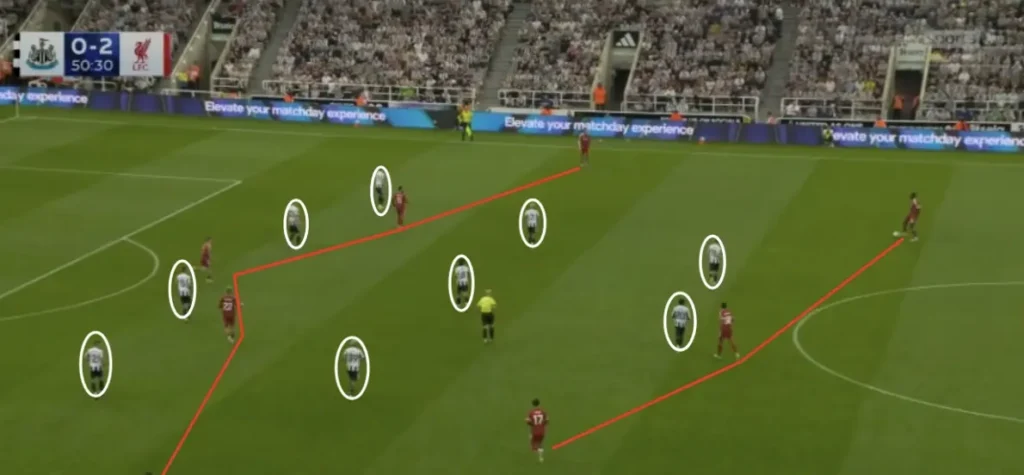
Liverpool stayed solid in their own half with a 4-3-3, closing central spaces but leaving the flanks less protected—an area Newcastle looked to exploit. Even so, Slot’s side maintained compactness, forcing Newcastle into risky switches or hopeful balls into space, which they defended strongly.
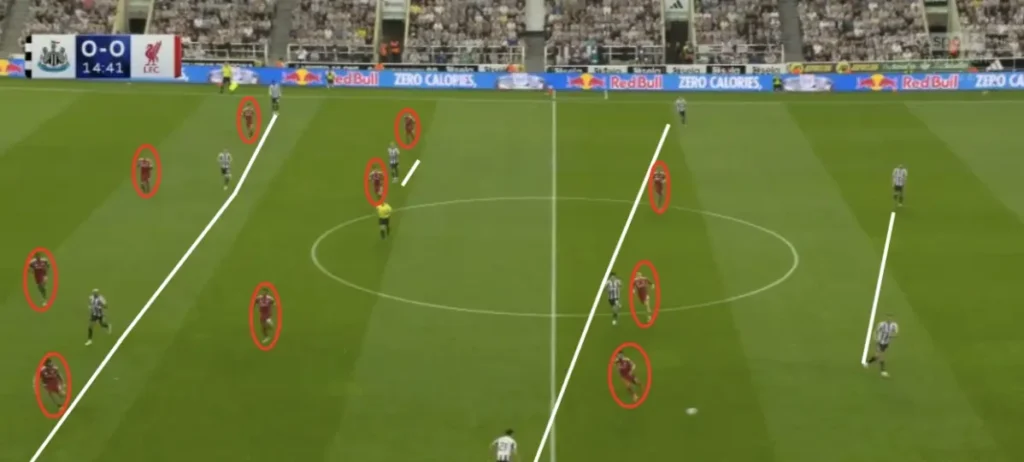
Liverpool’s Precision Punishes Newcastle
Despite Newcastle’s frequent crosses and attacking intent in the first half, it was Liverpool who struck first. After a throw-in and a series of ricochets, Gravenberch picked up the ball, feinted past Joelinton, and unleashed a shot from outside the box.
With just a 0.07 xG chance, his strike flew into Pope’s left corner—unstoppable. 0–1 Liverpool. The score remained that way until halftime, with Newcastle producing six shots but struggling to convert, while Liverpool scored from their only clear opportunity.
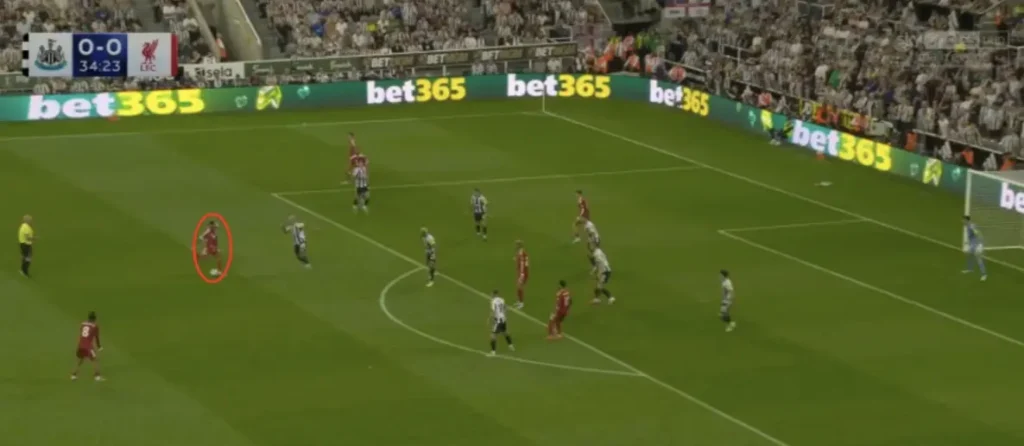
In the second half, with Newcastle down to ten men, Liverpool doubled their lead quickly. Ekitiké carried the ball from midfield, fed Gakpo, whose shot was saved, but the rebound fell back to him, and he squared for Ekitiké to finish into Pope’s bottom corner for 0–2.
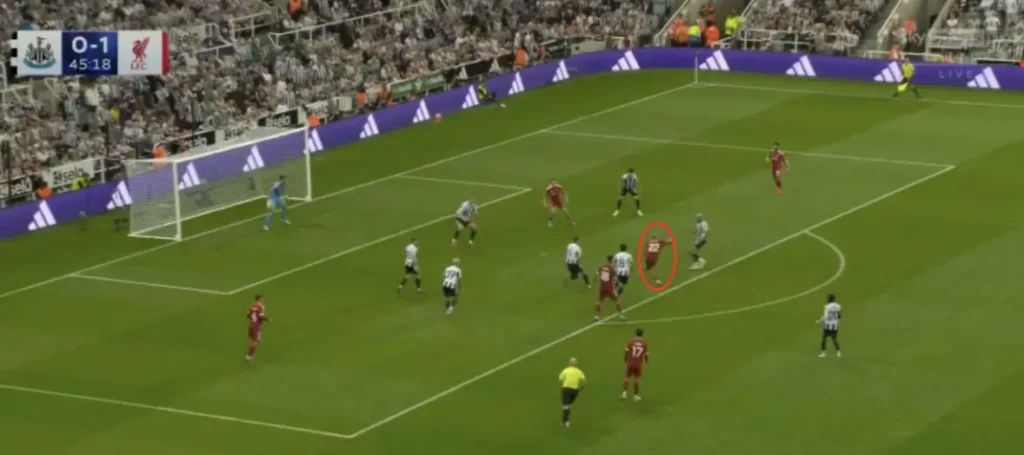
Crosses: The Key to the Comeback
At 0–2, Liverpool dominated possession but not the game. Newcastle’s intensity and defensive discipline kept them alive. From a corner clearance, Livramento delivered a wide cross that found captain Bruno Guimarães, who exploited Liverpool’s aerial weakness after a lapse by Kerkez to make it 1–2 and revive the crowd at St James’ Park.
Notably, in the first half, Gordon nearly scored in a similar way—running off the back of Szoboszlai from a Barnes cross—only to miss the target.
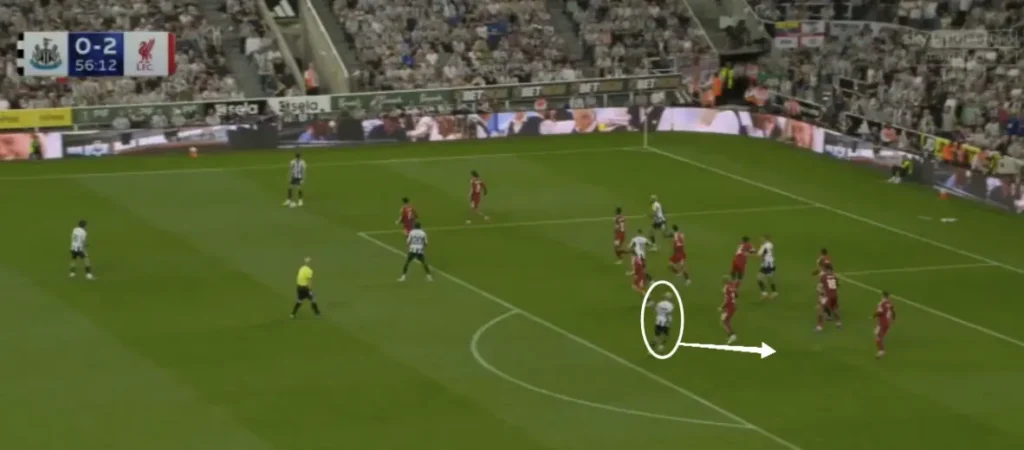
In the 87th minute, goalkeeper Pope launched a free-kick from his own half into Liverpool’s high line. After a flick-on, Osula found himself one-on-one with Alisson and slotted home for 2–2, completing what seemed like an epic comeback.
This goal highlighted Newcastle’s aerial strength (just as in their first goal) and exposed one of Liverpool’s key weaknesses: defending balls in the air.
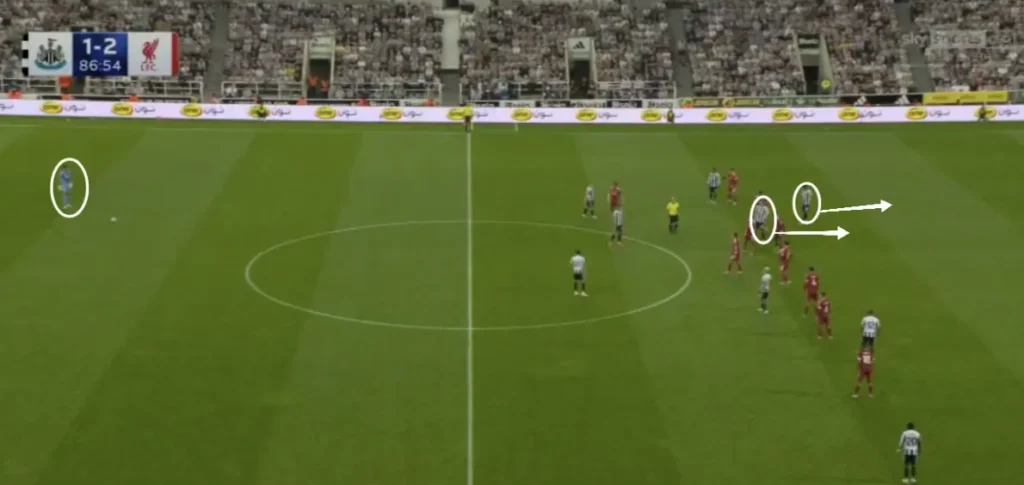
But Then Came Rio Ngumoha…
When it looked like the points would be shared, Liverpool struck in the very last action. A quick combination saw Bruno Guimarães overcommit in the press, leaving space in midfield. Chiesa and Salah combined, drawing defenders, before Salah slipped a ball inside for Szoboszlai, who cleverly let it run for Rio Ngumoha—the academy product—who scored his first senior goal to seal a dramatic 2–3 victory.
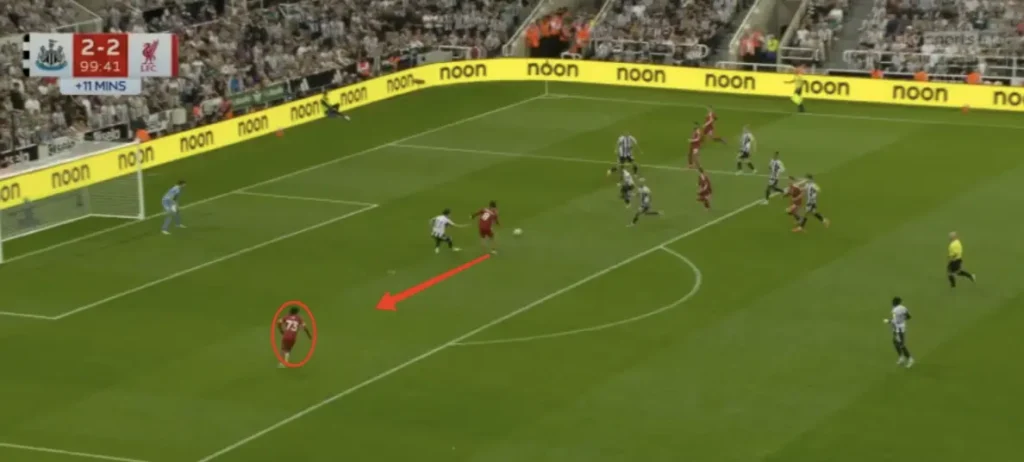
Final Thoughts
Despite the result, Newcastle held Liverpool—with a man advantage—until the 100th minute with compact defending and relentless exploitation of Liverpool’s aerial weaknesses. Yet, the individual quality and clinical finishing of the reigning Premier League champions proved decisive.
Would Newcastle have won had Gordon not been sent off? We’ll never know!
